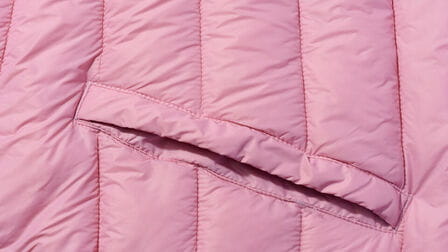Vintage clothing has exploded in popularity in recent years. As demand has increased for unique, authentic pieces from decades past, so too has the market for fake vintage - newly made items designed to look old and worn. This guide will teach you how to determine if that vintage band tee or concert souvenir shirt you have your eye on is the real deal, or a modern knock-off.
Examine the Fabric and Materials
The materials used to construct vintage and modern garments can provide many clues to a piece's provenance.
Fiber Content
Genuine vintage shirts will typically be crafted from natural plant-based or animal fibers like cotton, linen, wool or silk. Synthetic fibers such as polyester were rarely used in apparel production until the 1950s and 60s. If you see a tee shirt claiming to be from the 1940s but the tag says "100% polyester," it's a dead giveaway that it's not actually vintage.
Textile Quality

Not only will true vintage pieces be made of older fiber types, the quality of the base materials tends to be higher in older garments. Vintage t-shirts often feel substaintial and sturdy when handled, while newer shirts tend to be thinner and flimsier by comparison. Examine the weight and handfeel of the textile - does is seem proportionate to the era from which it's allegedly sourced?
Textile Imperfections
Antique garments have had decades to accumulate flaws from use, age and storage conditions. Expect to see slight irregularities in vintage fabrics:
- Minor holes, snags and pulls
- Sun fading unevenness
- Loss of vibrance and color depth
- Deterioration around stress points and openings
- Accumulation of pinholes from trapped insects
While excessive damage can diminish value, the total absence of wear is a red flag - it likely signals a new garment.
Verify Date-Specific Details
Another way to gauge the legitimacy of a vintage piece is to cross-reference the graphics, logos, flags and iconography it displays with the era it's supposed to represent.
Design Elements
- Do the graphics look faded, cracked or commercially-printed?
- Are the hues vibrant or muted?
- Does the aesthetic quality of the imagery seem consistent with the time period?
Study fashion history sources to compare decorative details against what was common in that decade.
Brand Logos
Research when the company, venue, sports team or brand depicted was established, active or using that specific logo design. For example, a shirt featuring a 1980s band printed with a website domain or Twitter handle (@handle) is instantly dubious.
Authenticate Labels and Hangtags
Collectors and historians have archived thousands of photos documenting the embroidery, size tags, paper ephemera and labels used from the 1920s onwards. Use these visual references to fact-check unique details against the example images available online or in libraries.
Tag Shapes & Sizes
The shape, size and placement of fabric tags has evolved greatly over the last century. For instance, vintage 70s shirts often have a long vertical tag at the side seam, whereas 1980s tees frequently sport a classic 3" square neck tag.
Font & Logo Styles
Cross-check when certain fonts, logos and company names were in use. Were they using a serif or sans-serif font in that year? Did the logo include an underline or drop shadow? What dates was that emblem in use?
Materials & Construction
What is the clothing tag made of? Vintage tags are typically single-ply cotton, muslin or rayon silkscreened or embossed with simple text-based info. Many modern reprints use thick, synthetic woven tags with glittering foil logos.
Consider Wear Patterns and Physical Aging
Garments meant to mimic vintage will look artificially faded and "broken-in" in ways that seem neat, hip but improbable after years of use. Genuine worn vintage develops holes, stains and abrasions in areas that directly contact the body and receive friction over time.
Collars & Cuffs
Check the ribbing on collars and cuffs for pilling and early signs of fabric breakdown. These high-stretch sites tend to show age faster than other areas that are less stressed.
Hemlines & Seams
Examine along seams and the bottom hem carefully. True vintage will often exhibit small holes, frays, loose threads and seam breakage near the bottom where rubbing occurs while walking.
Sweat Stains & Body Oils
Note sweat and skin oil discoloration around inner elbows, collar, yoke and sides. Even freshly laundered vintage will retain faint remnants of bodily contact and be slightly darker and yellowed where thewearer's body emitted oils and moisture.
Odd Fades
Genuine vintage shirts will develop uneven fading corresponding to parts of the garment that received more UV light, heat damage from dryers, or abrasion from use. Reprints usually look more uniformly washed-out overall.
While mastering all the nuances of vintage authentication takes years of experience and handling hundreds of confirmed vintage pieces, this guide covers the basic principles and key details to investigate. When shopping vintage, let skepticism be your guide - ask questions, demand provenance details, and walk away unless completely convinced of authenticity.
Conclusion
Determining if a vintage garment is truly from the era it purports to represent requires detective work and visual comparison against confirmed catalog images and film photography documenting how apparel naturally ages over 30+ years. Seeking reputable sellers specializing in consigned original vintage rather than thrift marketeers hawking random unvetted wares can also save much hassle and uncertainty. When examining a potential vintage purchase, cross-check the materials, tags, wear patterns, decorative details and physical damage you observe against known examples from the period. An informed vintage enthusiast is a savvy shopper - master the distinct qualities of antique fashion to always score authentic pieces full of history, craftsmanship and artistry.












